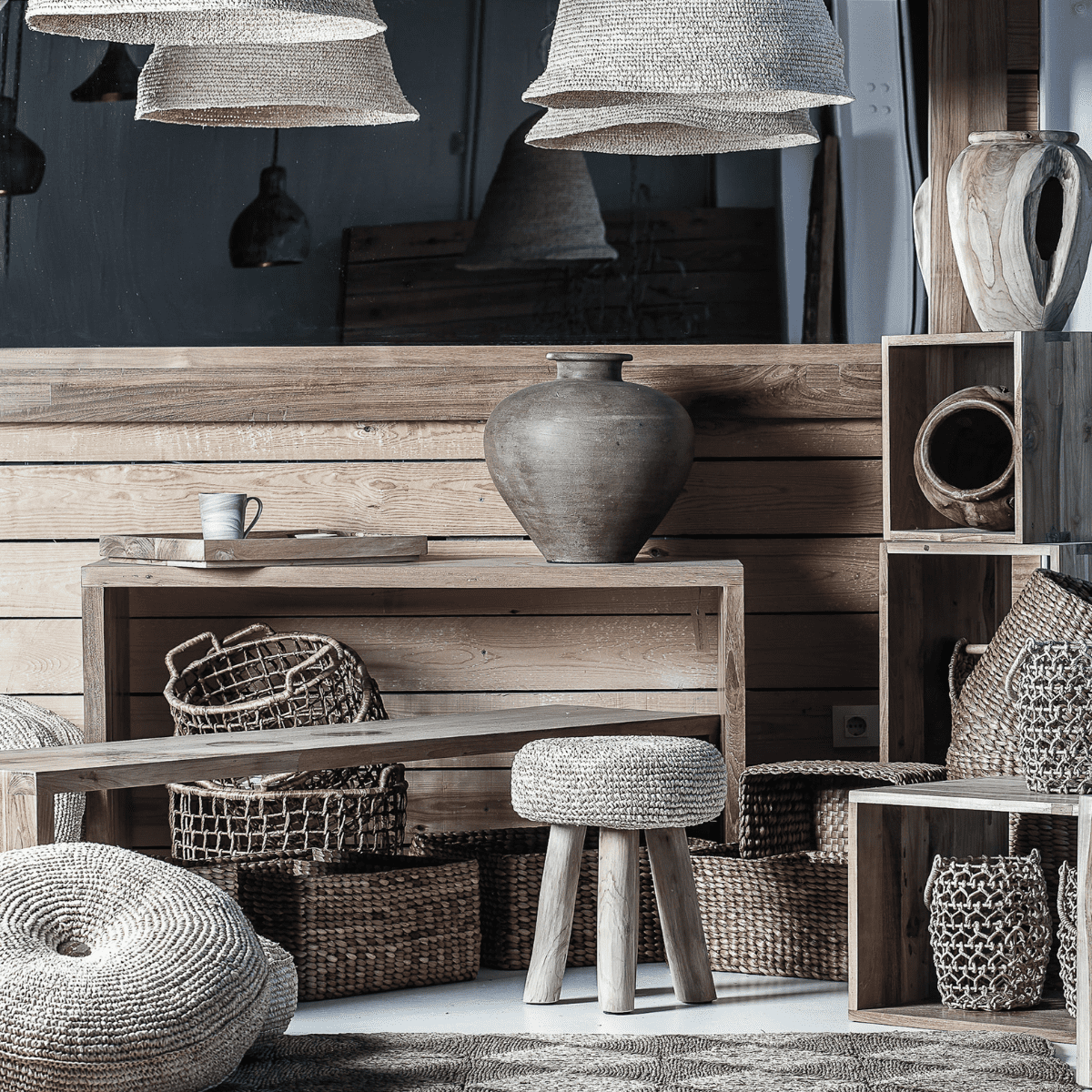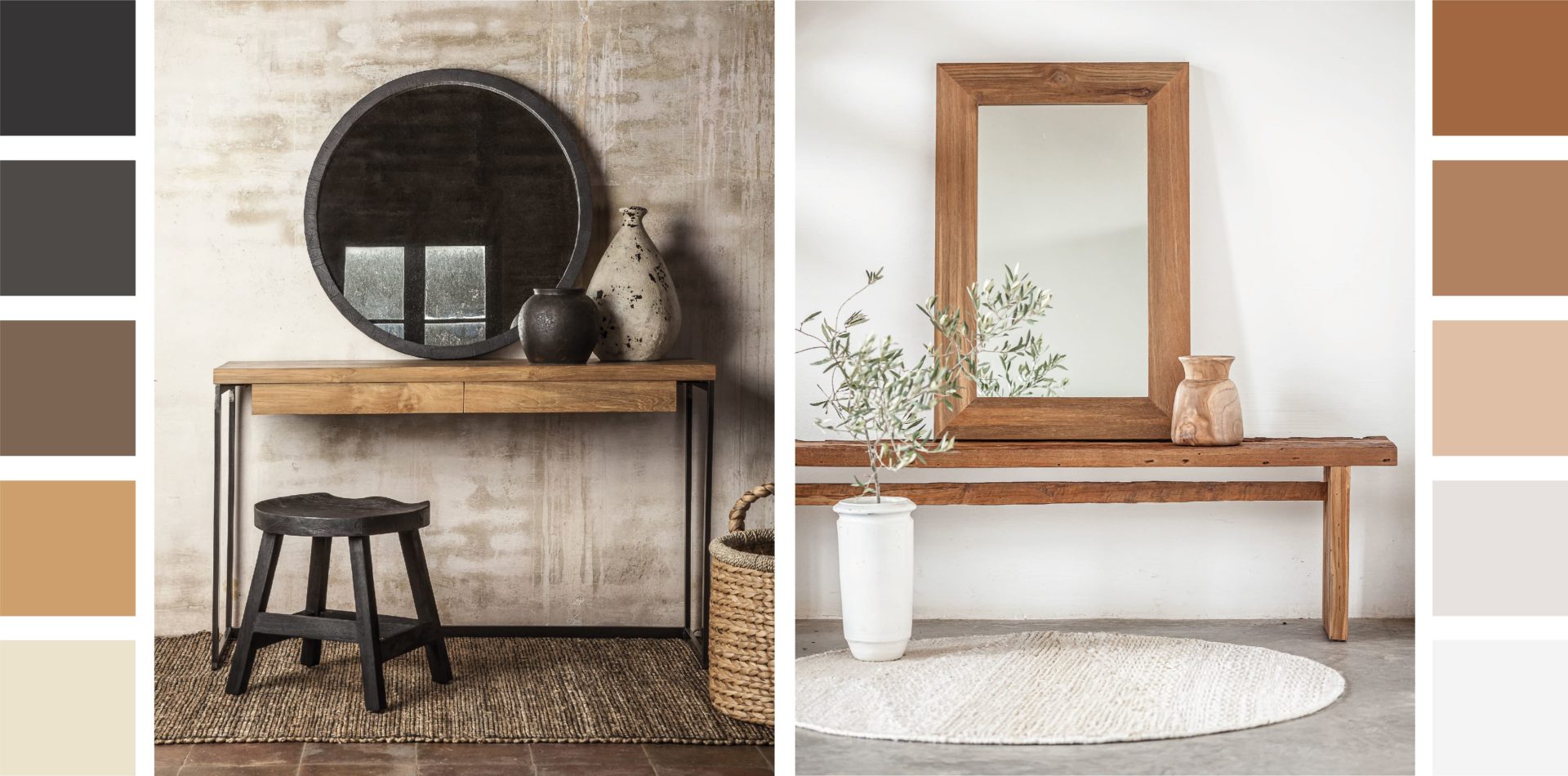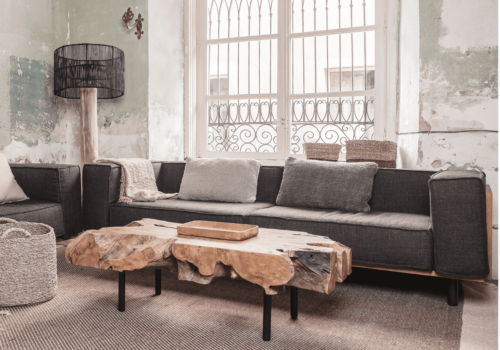La elección de colores para la decoración de espacios y diseño de interiores es un paso complejo del proceso de preparación del entorno. Puede que los colores más llamativos se lleven la atención al principio, pero existe el riesgo de que con el paso del tiempo pase a resultar pesado y aburrido.
Los colores neutros pueden suponer una apuesta más segura para entornos apacibles o que simplemente vayan a formar parte de la rutina diaria.
¿Qué son los colores neutros?
Los colores neutros son aquellos que se mezclan en el ambiente y son capaces de estar presentes en un espacio sin llamar la atención.
Los esenciales y más usados son el blanco, beige, gris, negro, y algunos marrones.
Cada color presenta de forma individual una serie de sensaciones que al combinarse correctamente crea la armonía deseada.
El Blanco aporta pureza, da sensación de limpieza, y es el lienzo perfecto en el que exponer nuestro diseño. El lino puede ser un gran aliado si se quiere contar con este color.
Los tonos beige presentan una calidez suave, y transmiten calma, tranquilidad y delicadeza.
Uno o varios elementos en gris expresarán sobriedad, cobijo, frialdad, y eclecticismo, por lo que necesitará apoyarse en tonos más cálido para hacer ambientes cómodos.
El negro siempre es señal de estilo, personalidad, y aporta profundidad a la estancia.
Los marrones pueden ser un buen punto de apoyo para armonizar y decorar espacios cálidos, especialmente si contamos con materiales naturales como maderas y arcillas, que sumarán texturas muy interesantes y únicas.
Al mismo tiempo, cada color neutro puede tener un subtono, que, dependiendo de si es más cercano a los azules o rojizos, resultará compatible con gamas frías o cálidas.
Estilos que encajan con los colores neutros
Al empezar a trabajar y decorar con colores neutros, pueden surgir dudas sobre el estilo que se tenía en mente podrá encajar con la paleta que se desea. En el caso que estamos tratando, es algo muy sencillo. Los colores neutros son muy versátiles y casan bien con muchos estilos diferentes:

- Nórdico. Probablemente el estilo más popular del momento. Abraza la simpleza de diseños inteligentes.
- Rústico. Una estética que invita a volver a los elementos más naturales. Ideal para residencias vacacionales, o simplemente escapar del ajetreo de la vida diaria.
- Clásico. Diseños algo más cargados, pero siempre con un toque de clase. Este estilo permite mucha capacidad de personalización.
- Industrial. Busca la unión entre funcionalidad y diseño, con elementos y materiales naturales y sencillos como la madera y el hierro.
- Moderno. La búsqueda de formas y composiciones interesantes puede casar perfectamente con los colores neutros, que cederán protagonismo a las piezas más llamativas de la habitación.
- Minimalista. Apuesta por el “menos es más” primando la calidad sobre la cantidad. Se sirve de los colores neutros para evitar tonos llamativos que distraigan de la constante sensación de calma que se busca.
- Wabi sabi. Estilo de Inspiración japonesa. Filosofía que busca la belleza en la imperfección con materiales naturales y artesanía, y rechaza los elementos industriales. Los colores neutros son fáciles de encontrar en la naturaleza, y por eso son ideales para los amantes de este estilo de vida.
Combinar los colores neutros
En ocasiones, para evitar la monotonía en una habitación de colores neutros, puede ser una buena opción utilizar detalles de colores complementarios, siendo estos breves para no romper la armonía.
También, para dejar claro que la paleta de colores ha sido intencionada y no producto de haber mezclado una serie de elementos que casualmente han acabado encajando, se recomienda no asignar más de cinco colores clave a la estancia.

El principal truco para tener en cuenta al decorar con una paleta de colores neutros, es que ésta será una base para atraer la atención hacia detalles más interesantes.
Jugar con las texturas de los elementos de la habitación pasa a ser algo esencial, así como aportar capas con textiles interesantes, plaids, alfombras…
Otra forma de aprovechar al máximo la decoración con colores neutros, es colocar piezas inspiradoras y detalles en las paredes, desde arte, fotografías y láminas hasta piezas decorativas interesantes, como puede ser un espejo de madera natural.
¿Qué ventajas tiene?
La elección de decorar con colores neutros, se basa, además de en la estética, en las grandes ventajas que presentan estos tonos, como la facilidad de adaptación estacional del espacio. Para preparar la casa de verano a invierno, bastará con cambiar unos detalles.
Igualmente, si lo que se pretende es un cambio mayor para transformar la habitación, también resultará una tarea mucho más sencilla, pues una paleta neutra puede valer para cualquier tipo de espacio.
El mantenimiento de las habitaciones con colores neutros también se simplifica, dejando tareas pesadas como la pintura de paredes coloridas que ya dejaron de ser interesantes, a una sesión de pintura única, al menos en mucho más tiempo.







